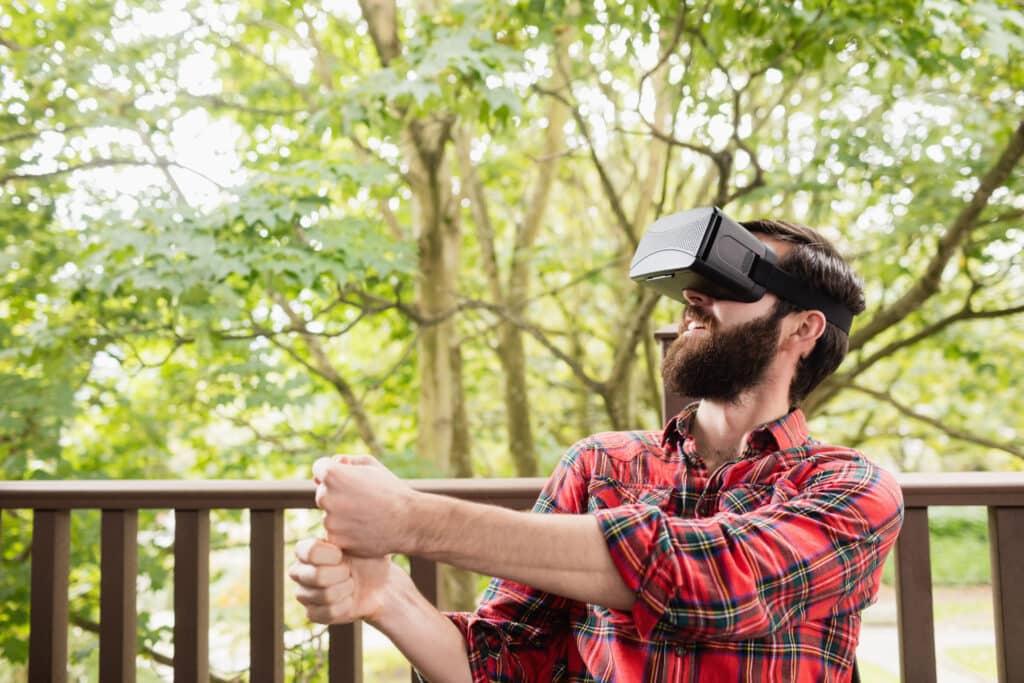
What is Mixed Reality?
First things first, what exactly is Mixed Reality? Imagine being able to interact with virtual objects as if they were part of your real-world surroundings. That’s MR for you! Unlike VR, which immerses you in a completely digital environment, or AR, which simply overlays digital elements on the real world, MR creates a hybrid space where digital and physical elements coexist and interact in real-time.
Key Components of Mixed Reality
Hardware
To experience MR, you need some pretty cool gadgets. Think of devices like the Microsoft HoloLens or the Apple Vision Pro. These headsets are designed to blend the physical and virtual worlds seamlessly. They come equipped with advanced sensors, cameras, and wearables that track your environment and interactions. It’s like having a superpower that lets you see and manipulate digital objects in your living room!
Software
Behind the scenes, powerful software algorithms work their magic. They process the data captured by the hardware, enabling virtual elements to interact with the physical world in real-time. Technologies like computer vision, AI, and machine learning play a crucial role here. They ensure that virtual objects behave as if they’re part of your real-world environment, making the experience incredibly immersive.
Sensors and Tracking
Real-time tracking is the backbone of MR. It allows for the correct placement and manipulation of virtual objects within physical spaces. Imagine playing a game where virtual creatures interact with your furniture or attending a virtual meeting where digital avatars sit around your actual conference table. That’s the power of precise tracking!
Applications of Mixed Reality
Now, let’s talk about where MR is making waves. Spoiler alert: it’s everywhere!
Education
Remember those boring biology classes with endless diagrams? MR turns them into interactive, 3D learning experiences. Imagine exploring the human anatomy in a virtual lab or taking a field trip to ancient Rome without leaving your classroom. MR makes learning fun and engaging, bringing subjects to life in ways textbooks never could.
Healthcare
In the medical field, MR is a game-changer. It aids in training medical professionals by providing realistic simulations. Surgeons can practice complex procedures in a risk-free virtual environment. During actual surgeries, MR offers real-time guidance, displaying critical information right in the surgeon’s field of view. It’s like having a digital assistant that helps save lives!
Gaming
If you’re a gamer, you’re in for a treat! MR has transformed the gaming experience, merging digital and physical worlds. Games like “Minecraft Earth” and “Pokémon Go” let you interact with virtual elements in your real surroundings. Imagine battling virtual monsters in your backyard or building digital structures in your living room. It’s gaming like never before!
Enterprise
Businesses are also jumping on the MR bandwagon. Companies use it for training, remote support, and design, especially in industries like manufacturing and retail. Imagine a virtual meeting where team members from around the world collaborate on a 3D model of a new product. MR makes it possible, enhancing productivity and creativity.
Challenges in Mixed Reality
Of course, no technology is without its challenges. MR faces a few hurdles on its path to widespread adoption.
Technical Limitations
MR requires significant computational power and precision in tracking, mapping, and rendering environments. Current hardware, like MR headsets, still struggles with providing a large field of view and seamless user interactions. It’s like trying to fit a grand symphony into a tiny speaker. But fear not, advancements in technology are on the horizon!
Adoption Barriers
Despite its potential, MR adoption is slow due to high costs and technical complexity. Developing MR applications requires specialized skills, and not everyone is ready to make the leap. It’s like having a Ferrari but needing a racetrack to fully enjoy it. However, as technology becomes more accessible, these barriers are expected to diminish.
The Future of Mixed Reality
As MR continues to evolve, advancements in AI, 5G, and hardware improvements will further enhance its capabilities. Imagine a world where MR is as common as smartphones, enriching our daily lives in ways we can’t yet imagine. From entertainment to education, healthcare to enterprise, the possibilities are endless.
People Also Ask
Before we wrap up, let’s address some common questions about MR:
- What are the differences between MR, VR, and AR? In a nutshell, VR immerses you in a digital world, AR overlays digital elements on the real world, and MR blends the two, allowing for interactions between real and virtual elements.
- How is MR used in healthcare and education? In healthcare, MR aids in training and provides real-time guidance during surgeries. In education, it creates interactive, 3D learning experiences, making complex subjects more accessible and engaging.
- What are the limitations of MR technology? MR faces challenges like high costs, technical complexity, and the need for specialized skills. However, ongoing advancements are expected to overcome these hurdles.
Conclusion
Mixed Reality is a groundbreaking technology that’s reshaping how we interact with the world around us. From enhancing education and healthcare to revolutionizing gaming and enterprise, its applications are vast and varied. While challenges remain, the future of MR is bright, promising a more immersive and interconnected world. So, keep an eye on this space—exciting times are ahead!
Step into the future of immersive technology with mixed reality! Contact Virtually Anywhere today to explore What is Mixed Reality? and discover how it blends virtual and real-world experiences for unparalleled interaction. Whether for training, entertainment, or business, mixed reality is transforming industries. Don’t just watch—experience the future today!




